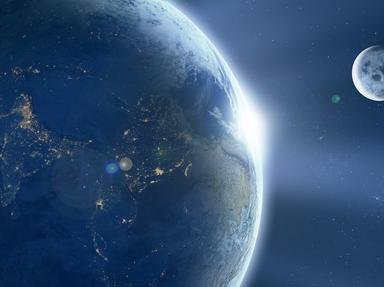Quiz Answer Key and Fun Facts
1. Moons come in many sizes. Which moon is the largest moon in the solar system?
2. Aside from Earth, all of the other planets appear to be geologically dead. For centuries, Earth was the only world to have known active volcanoes. Which moon was the first to be discovered to have active volcanoes?
3. At one time only planets were known to have moons. Which asteroid was the first found to have a satellite orbiting it?
4. Except for the recently discovered moons far out in the solar system, almost all moons have had official names -- the same in every language -- for many years. One planet has a moon with no other official, definite name. Which one is it?
5. Our moon has been seen in the sky for all of human history. Beyond our own, the first four moons to be seen were discovered in 1610. Which planet's moons were they?
6. Most moons are named for mythical characters. This planet has moons named for characters from several different Shakespeare plays.
7. Moons that are geologically active are among the most interesting. This moon is known for its giant ice geysers.
8. Of the planets in our solar system, the gas giants all have many moons. Which of the inner four rocky planets has the most moons?
9. Almost all unmanned space missions that have landed on another world beyond our moon have landed on planets. There is a moon which was visited by a space probe in 2005. Which one is it?
10. Most moons have their own orbits, relatively far away from any other moons. These two moons are in almost the same orbit, close to Saturn's rings.
Source: Author
NYFOREVER
This quiz was reviewed by FunTrivia editor
crisw before going online.
Any errors found in FunTrivia content are routinely corrected through our feedback system.

